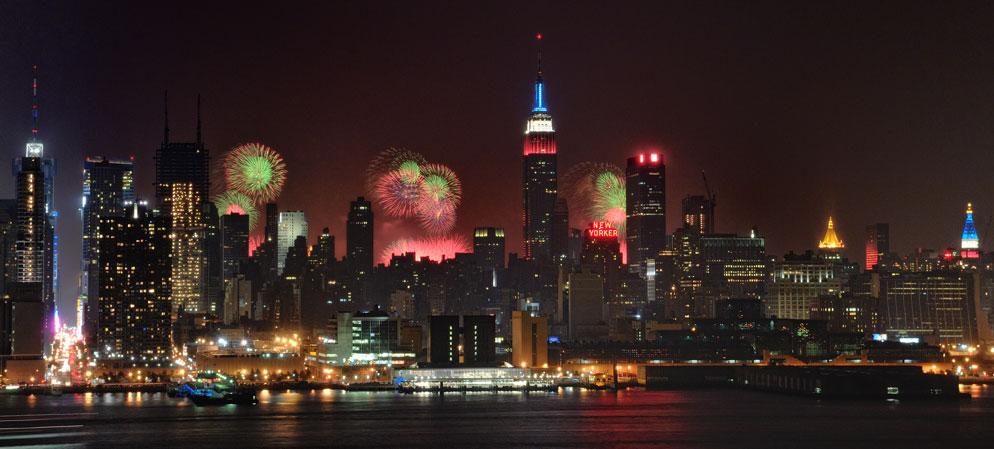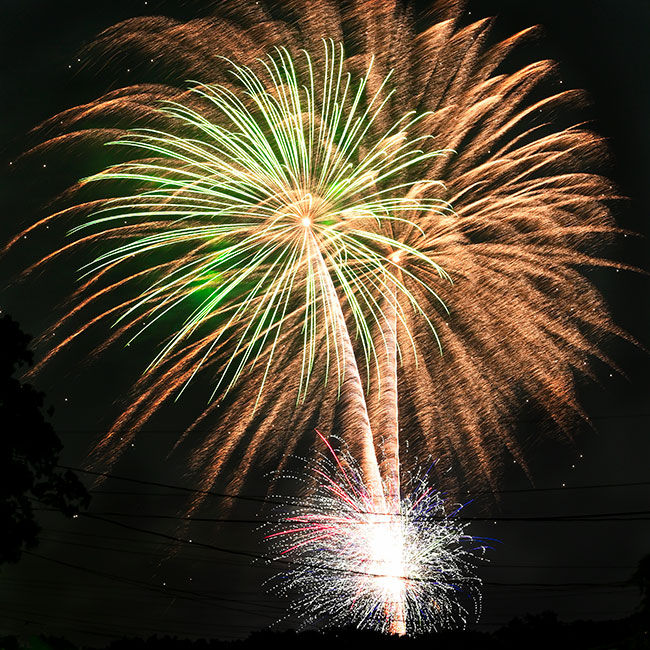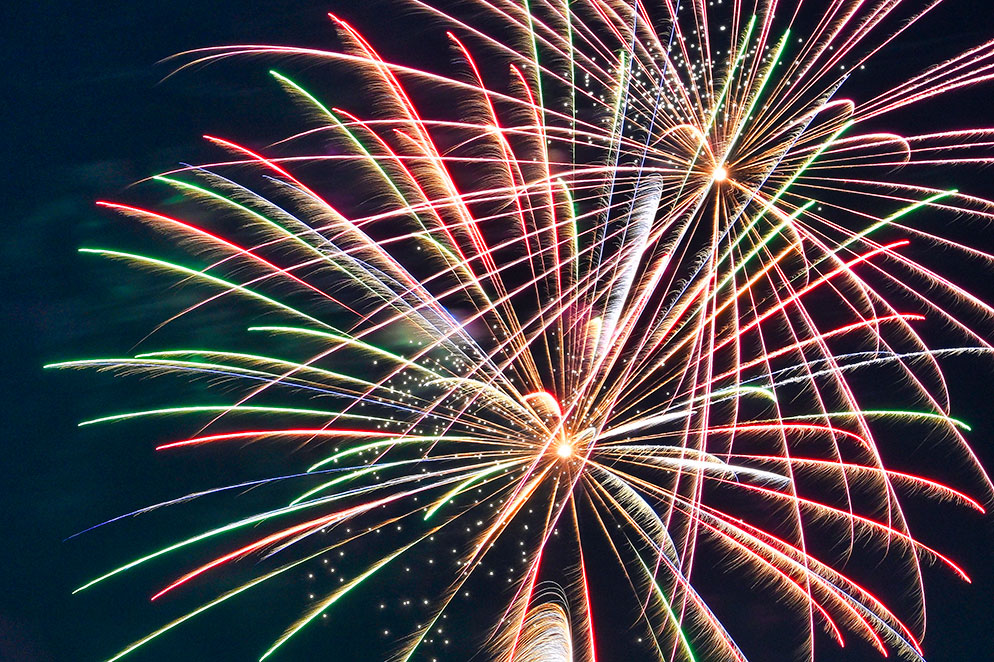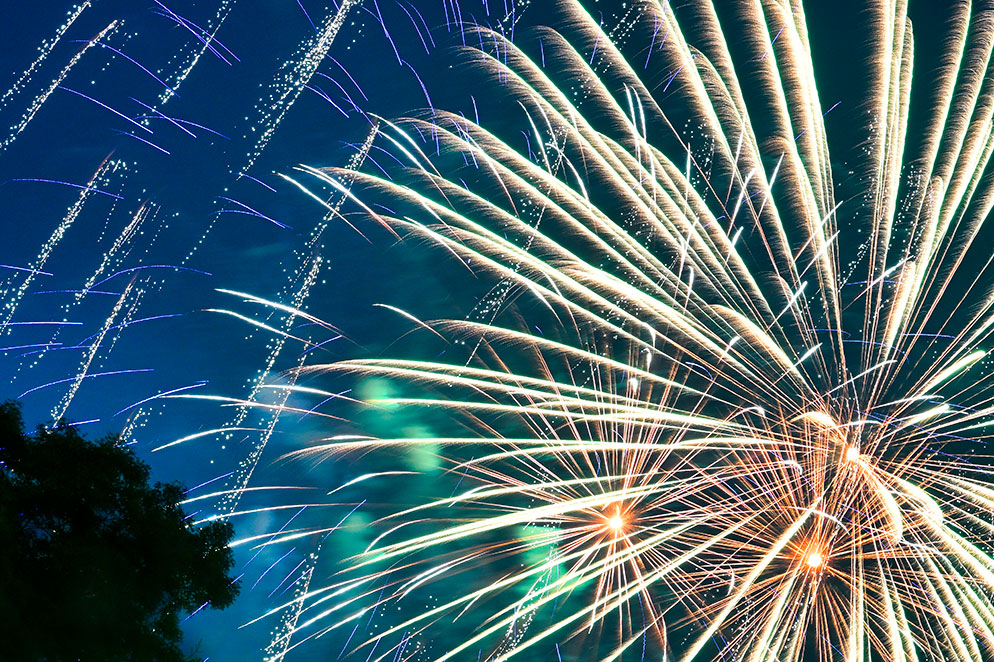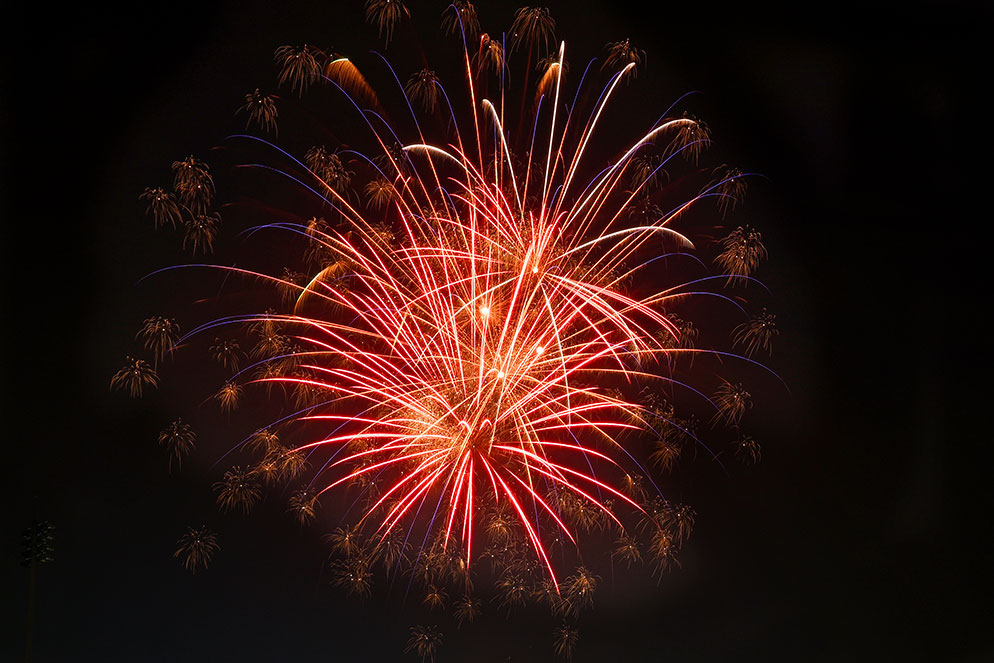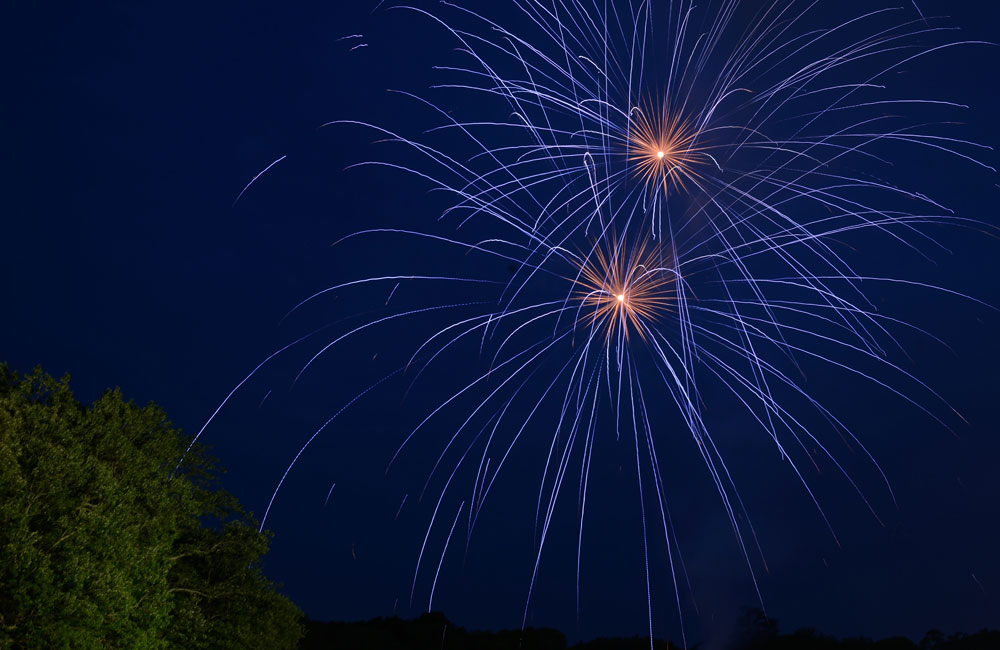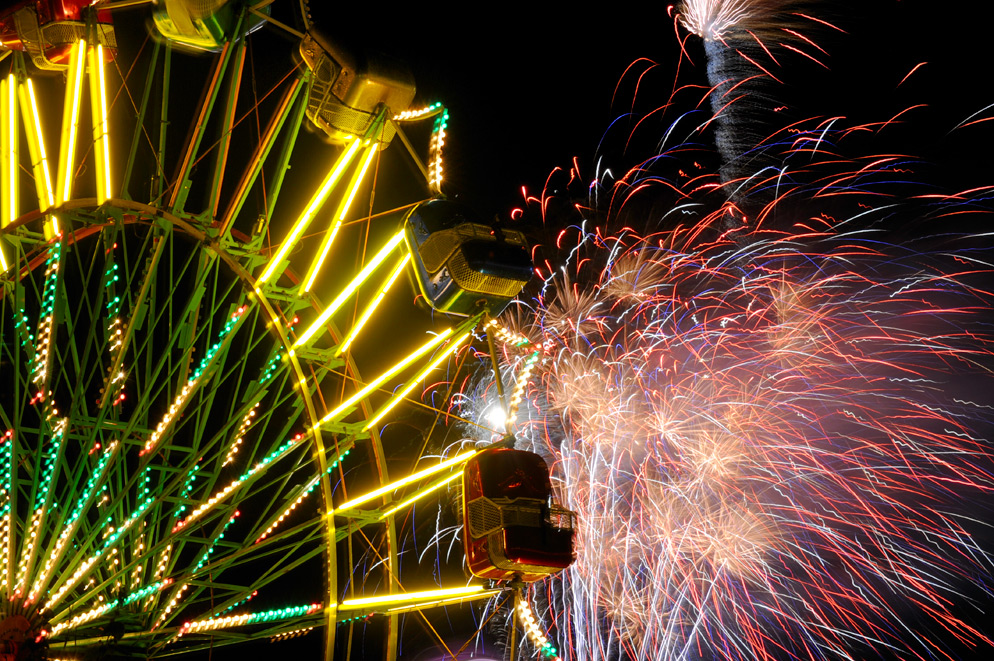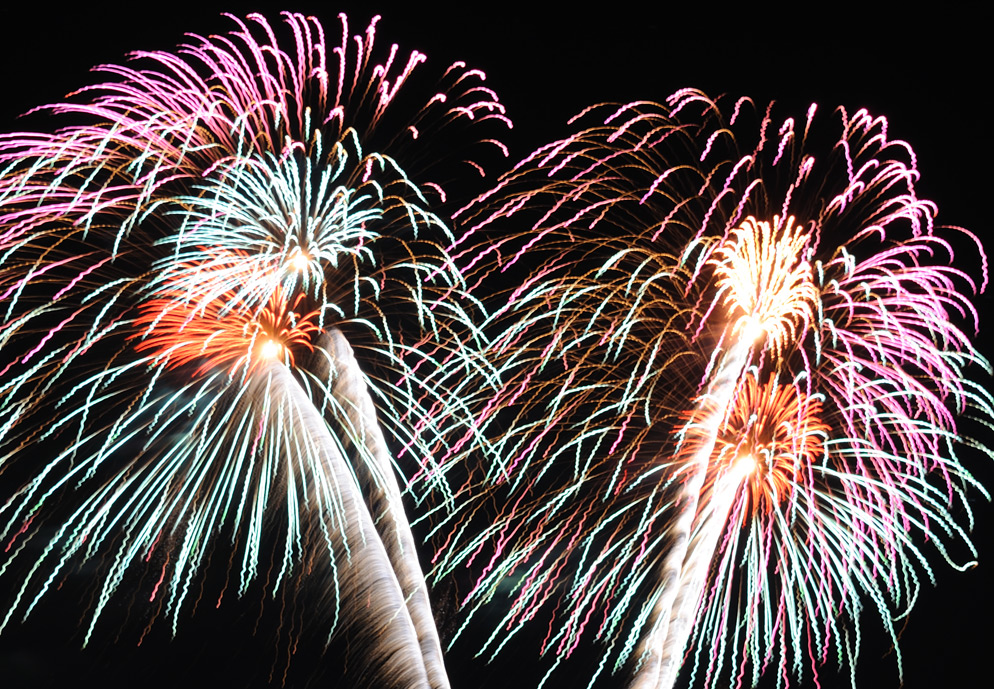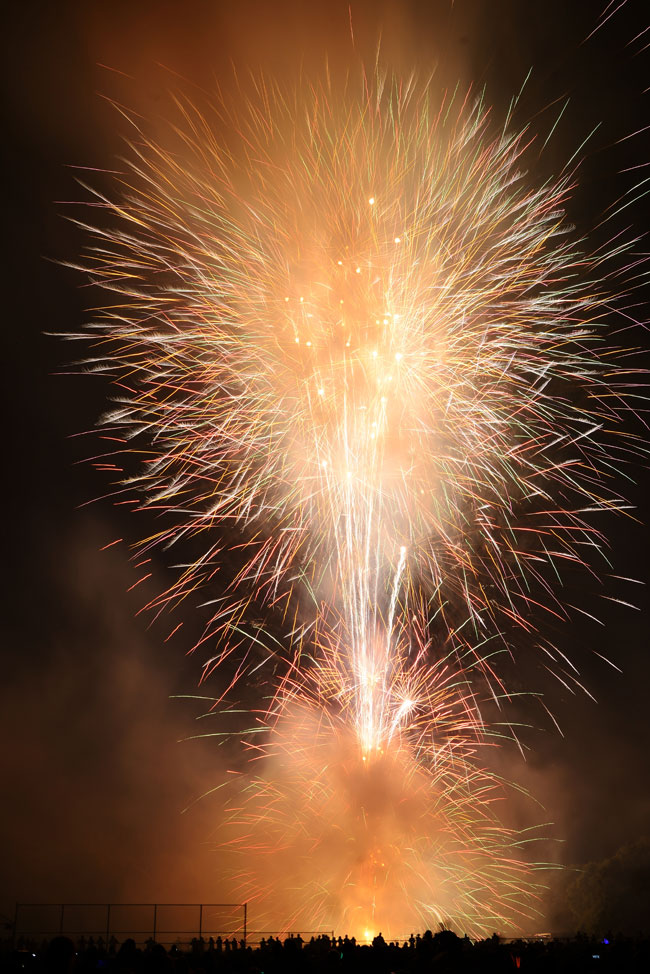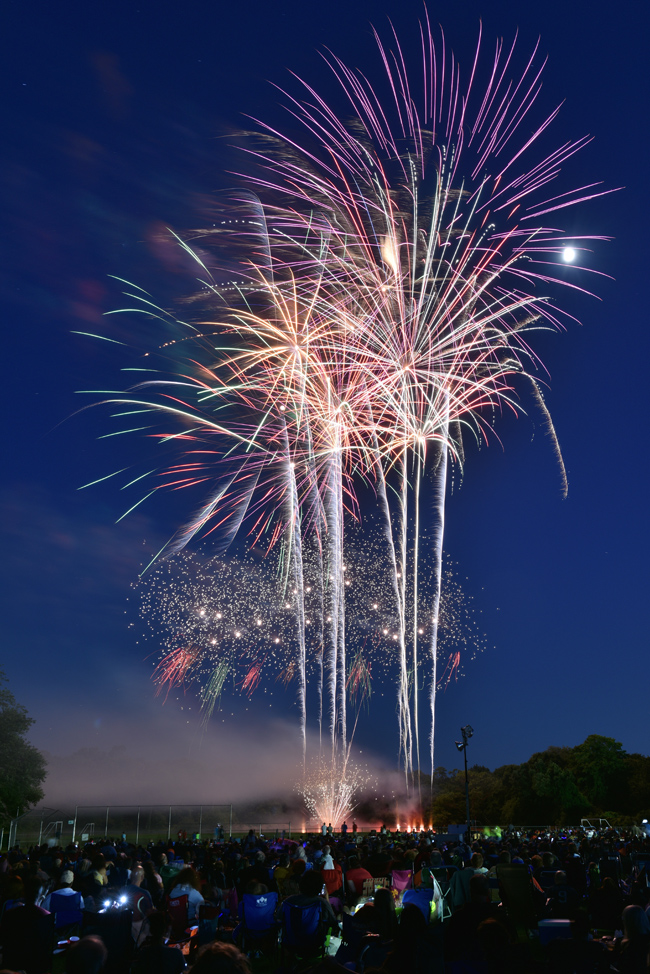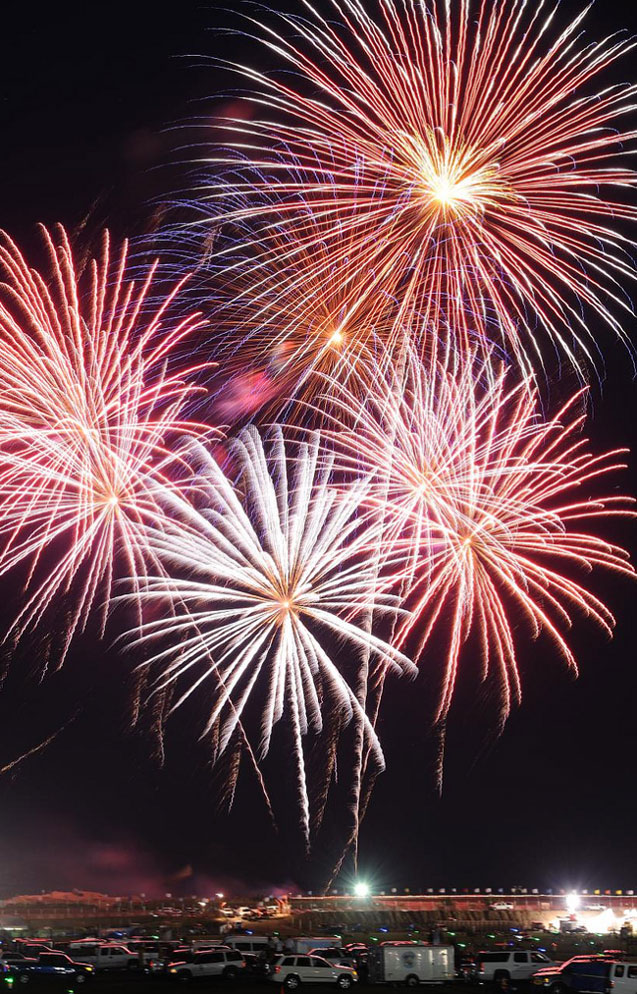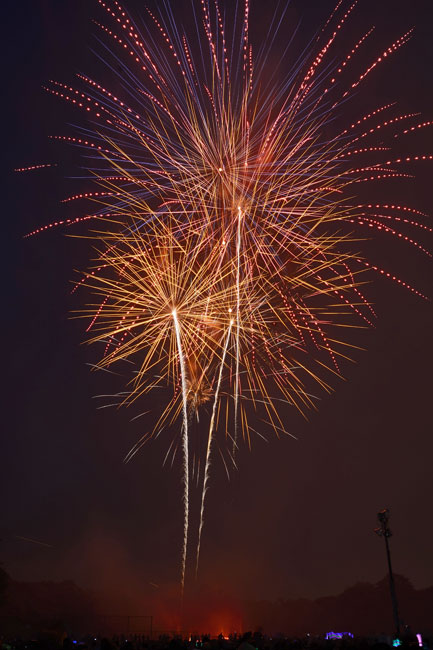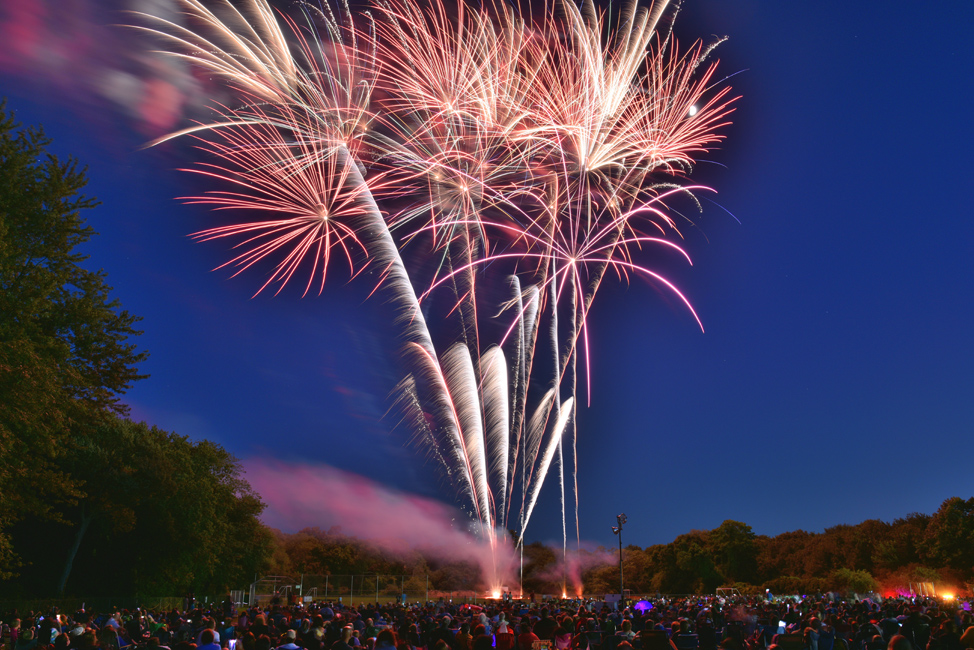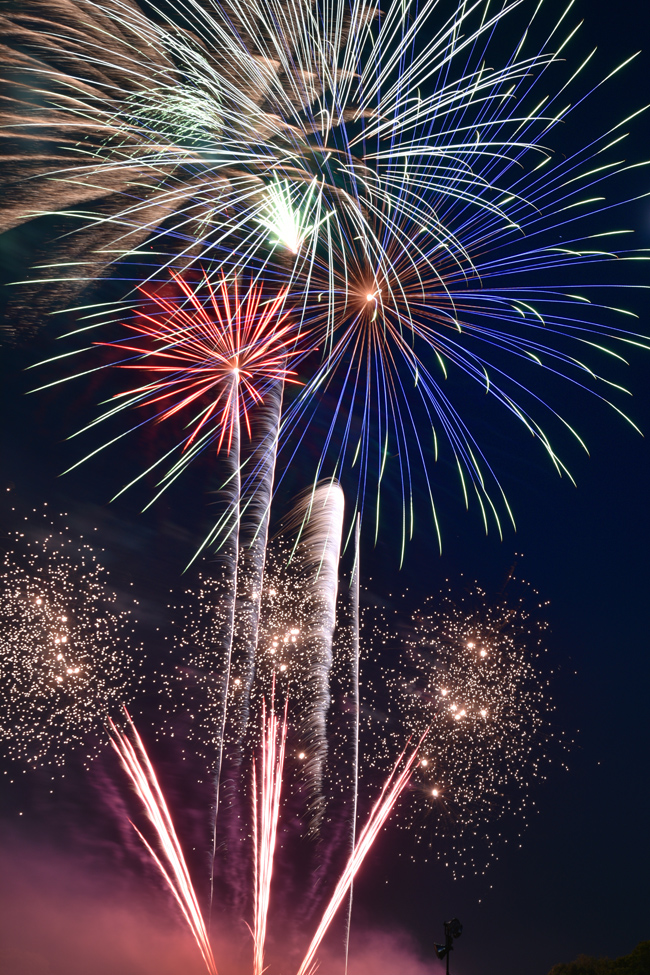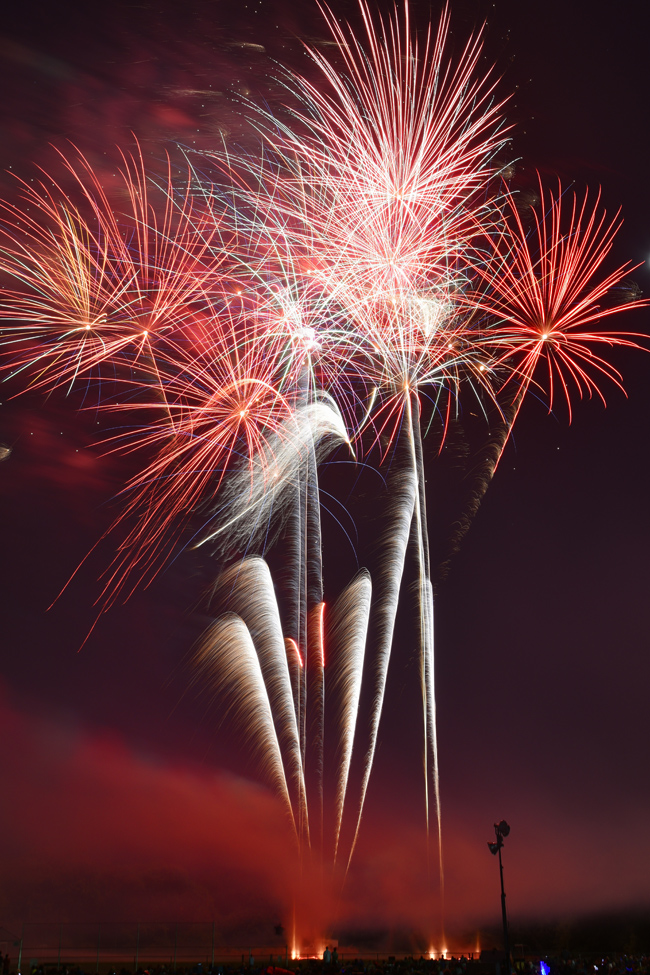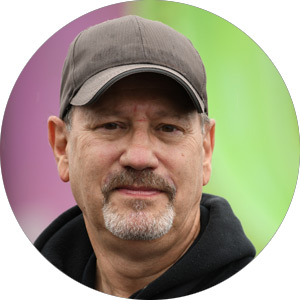Taking Pictures of Fireworks
Summer is the season for viewing and photographing fireworks. Everyone can do it—all you need are fireworks, a camera and a little bit of planning. Here's a quick guide.
Location for Photographing Fireworks
Once you've found a scheduled display, take the lay of the land, considering possible backdrops for your fireworks photos. Then, get to the spot early to claim the high ground—a place in which you'll be comfortable and one that will give you an unobstructed, camera-eye's view of the colorful proceedings. As you can tell from my photos, I like to photograph the fireworks over New York City, and for that I show up really early—I mean hours before the first fuse is lit or switch thrown.
When you get to the location, look for foreground objects. Fireworks against a black sky are colorful, but not that exciting in a photograph. Reference points—buildings, hillsides, trees, monuments—help a lot. (If you're thinking about layering your fireworks' images into other pictures or combining a few into one image, then the blank sky background is the way to go, as you'll want nothing else but lights and sparkles.)
Camera & Lens Settings
Any Nikon DSLR or Z series mirrorless camera will do. I suggest you use an electronic cable release or wireless remote, because the less you touch the camera, the better. A wide-angle lens is ideal, but if you're farther away from the sky show than you'd like to be, a telephoto will be helpful. An 18-200mm or 18-140mm zoom with will do nicely. If you're using a VR (vibration reduction) NIKKOR, check the instruction book; when some VRs are used on a tripod-mounted camera, turning off the VR function is recommended.
If you want to shoot video of fireworks with your camera, the best way to shoot them is by using the auto mode. Then you can incorporate the movies and stills into a compelling slideshow or edited movie to share with family and friends. You could also get really creative and play around with the focus, to see how you can capture the colors. As with shooting still images, using a tripod when shooting fireworks in movie mode is essential.
A tripod is essential for fireworks. Get a good one: strong, sturdy, solid. Set it up so your camera's brought up to eye level by the height of the tripod's legs, not the height of the center column. For maximum camera stability, keep the center column as low as you can.
A great feature found on most Nikon cameras called Image Overlay can be used for this layering technique—it’s usually found in the camera's Retouch menu. Just set the camera's image quality for NEF (RAW) shooting, shoot the fireworks against a dark sky—making sure to leave room at the bottom of the frame that will be devoid of any of the fireworks. Later on, when you have taken a photograph (also at night) of a building for instance, you can very quickly layer the two photos in-camera without the need for a computer. It’s a great technique, so check out all the details in your camera's instruction manual to learn how to set it up.
How to Photograph Fireworks with a Nikon Camera
Z series Mirrorless
You can easily use a Nikon Z series mirrorless camera to photograph fireworks. The mirrorless cameras can capture still images, time-lapse and video. You'll want to follow many of the tips that you would use when shooting with a DSLR. A remote to trigger the shutter without causing camera shake is a must. Use either the NIKKOR Z lenses or your compatible F-mount lenses with the Mount Adapter FTZ.
DSLR
First I use a Nikon DSLR feature called long exposure noise reduction. Then I shoot at the highest quality I can: the NEF file. Turn off the autofocus, otherwise it might have difficulty locking onto focus. Manually focus your lens at infinity. When the fireworks start I tend to mark my exposures not so much by time but by the number of air bursts. I'll expose for three, four or five bursts; sometimes I'll keep the shutter open for up to ten. Fireworks shows last a pretty long time, so you'll be able to check the back of the camera to see how your best guesses for exposure are turning out. I have a starting point you might want to try: ISO 200 at f/11. I review the first shot—looking for detail, color and sharpness—and adjust from there. If I'm underexposed a bit, I'll open the aperture; if overexposed, I'll close down.
Because I'm on Bulb, I can expose for the entire length of a fireworks burst. I'll simply cover the lens until I'm ready and then uncover it for a full fireworks burst. I can also cover and uncover the lens multiple times to capture multiple fireworks bursts for one exposure.
COOLPIX
While an SLR is preferable for fireworks, a COOLPIX won't be out of place or at a loss. In fact, many COOLPIX models feature a fireworks scene mode. A tripod is essential here, too, and it's a good idea to release the shutter via the self-timer to keep the camera as steady as possible. A neat COOLPIX extra: you can shoot a movie of the fireworks as well as stills.
Nikon 1
You can also use a Nikon 1 compact advanced digital camera with interchangeable lenses to shoot fireworks. With a Nikon 1 camera, you can capture Motion Snapshots as well as still images and video. Select Nikon 1 cameras can be set to Bulb (B) for capturing full fireworks bursts or multiple fireworks bursts. Check you camera's manual to see if your camera has this functionality.
Fireworks Photography Tips $
-
Use a tripod.
-
Use a cable release or wireless remote to trigger the shutter if you have one.
-
Turn on Long Exposure Noise Reduction.
-
Shoot the highest quality file you can. NEF is ideal.
-
Set the camera to a low ISO, such as 200.
-
A good starting point for aperture is f/11.
-
Instead of choosing a shutter speed, set the camera to Bulb (B) which allows you to keep the shutter open as long as you want. Expose for the entire fireworks burst. You can even keep the shutter open for multiple bursts.
- Turn off the autofocus, otherwise it might have difficulty locking onto focus. Manually focus your lens at infinity.


